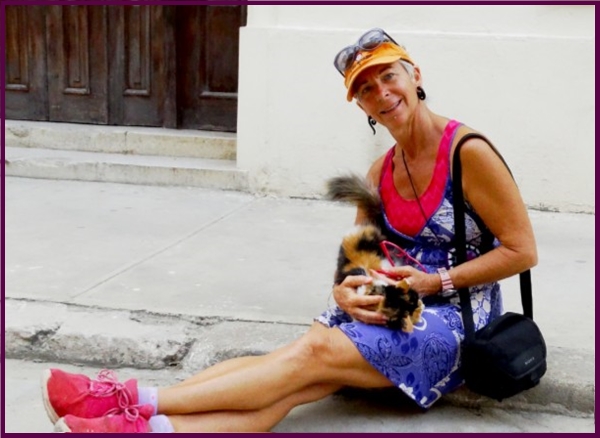
hanging out with a with cat in Havana
28 Money Saving Tips for Budget Travel in Cuba
General Cost-Cutting Tips
1. Visit in off-season = May/June and Sept/October
Like travel to just about any country, during low travel season prices of accommodation, tours & activities and possibly even meals are often considerably lower than in high season. In addition, you’ll be able to skip big crowds and often do things more easily.
2. Read my article on preparing to visit Cuba for Americans
I wrote this detailed article particularly for Americans planning to visit Cuba. Americans are now allowed to visit Cuba legally, but there are several considerations a procedures you need to be aware of before you go. Some of these will affect how much it costs you to visit, with several suggestions you may want to use.
3. Exchange some of your Cuban CUC for MN and use that wherever you can
A very unusual aspect of Cuba is that they have two local currencies, both of which are used regularly by Cuban citizens. Visitors can use them both too, but most source of information for travelers to Cuba only talk about one currency – CUC (Cuban Convertible Currency).
CUC is set to equal the $US – aka $1 CUC = $1US. In Cuba, prices of accommodation, most transportation, high-end restaurants and many high-end goods are listed in CUC.
The value of the other currency, MN (moneda nacional), also called CUP, is 24-25 MN (aka ‘pesos’) = $1 CUC.
Cubans are paid salaries in MN. State run stores, and many locally-run restaurants, cafes, street stalls, local bakeries & pastry shops, local buses & share taxis, markets and other places generally have their goods & services priced in MN.
There’s where things in Cuba are super cheap! You can eat complete meals for 25-75 MN / $1-3 US, ride a bus in Havana for $0.40 MN / 1 cent US, take a share taxi for 10 MN / 0.40 cents US, buy and avocado for 10 MN / 0.40 cents US or a pastry for 3 MN / 14 cents, and so on.
If you’re traveling on a budget in Cuba, using moneda nacional will really cut your costs!
How to: when you change money in Cuba, you must first convert it to CUC. But then you can immediately convert some of your CUC into MN at the very same exchange booth, if you so choose.
When I traveled through Cuba for one month, I spent about $100 CUC worth of MN (2500 MN) out of a total of about $650 CUC used. That saved me a lot of money.
 Tips on flights to/from Cuba
Tips on flights to/from Cuba
4. Fly into/out of other cities in Cuba besides Havana
In Cuba I met several other travelers who flew into other Cuban cities, primarily because the flights were much cheaper. One traveler told me her flight into Holguin was 50% cheaper than flying into Havana. So check out all the available options when you search flight.
This could also save you an extra overland trip, which are expensive, by flying into one city and flying out of Havana or visa/versa.
5. Fly to/from Mexico NOT the USA
If you look at a world map, you’ll see how incredibly close Mexico is to Cuba, particularly Cancun. It shouldn’t be surprising, then, that flights between Cuba and Mexico are super cheap. Flying to/from Mexico City and Cancun are generally the cheapest.
Visitors flying from Mexico also get a much lower price for their Cuban Visa. When I flew out of Mexico City in October, 2018, the visa cost 250 Mx pesos / $13 US.
On the other hand, flying directly from the US, Cuban visas cost anywhere from $50-120 US !
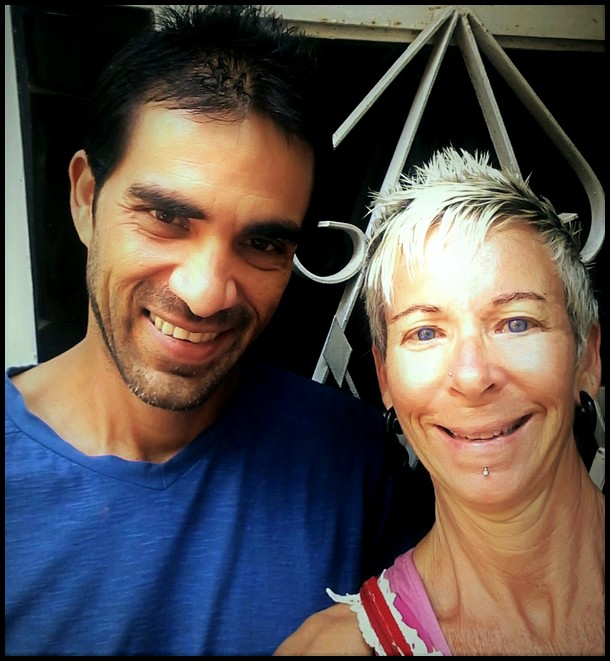
Carlos of Hostal Mango in Havana
Accommodation Tips
6. Visit in off-season
As I mentioned above, many Cuban accommodations charge considerably lower rates during off season. Prices often double or triple in high season – December to April.
During May/June and September/October, it’s easy to find rooms all over Cuba at ‘casa particulares’ on AirBnB for $10-11 US per night. Many of these rooms jump to $20-25 during high season. It’s also much easier to find rooms without reservations and at the last minute by recommendation or walking around.
7. Plug into Hostel Mango and their casa particulares group
Hostel Mango is a great little guest house/hostel that actually has a dorm room. Beds in the dorm cost $8 per night, all year round, all the time. That includes a hearty breakfast. The hosts are super friendly & helpful, the house always immaculate. They’re also the only hostel I found with it’s own independent website (link above) !
Carlos, the owner, has a network of other guest houses all over the country that he has carefully hand-picked. All of them have super-friendly, down-to-earth owners ; immaculately clean houses; and charge $10 per night, all year round, without raising their rates.
All of them, of course, can also help with transportation reservations, suggestions on tours & activities, restaurants & events, usually at the lowest rates around.
Once you plug into this group, you can be sure to keep your accommodation costs low.
8. Stay in hostels in Havana – on HostelsCentral and HostelWorld
Havana is the only place in Cuba that I found real hostels – with dorm rooms, where guests pay for a bed rather than a private room. You can find these hostels on HostelsCentral, in case you prefer to stay in another area of Havana or otherwise opt to not stay at Hostel Mango.
9. Use AirBnB to find the least expensive casa particulares
Quite luckily for Cuba’s thousands of casa particulares owners, AirBnB now lists hundreds of these guest houses for just about every destination in the country. This is also where I found the lowest prices for rooms in Cuba.
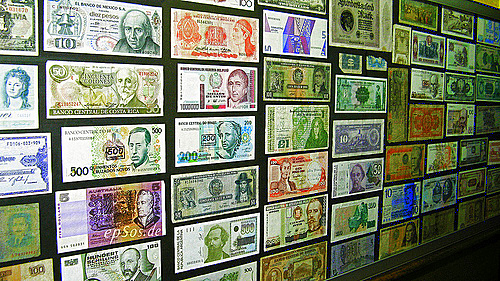
international currencies
Cuban Visa & Money exchange Tips
10. DO NOT take $US to Cuba!
When exchanging money into CUC, the Cuban government charges a 3% commission on all currencies. That, in itself really adds up to a chunk of money ‘wasted’ just on exchange. For instance, if you exchange a total of $1000 US, you’ll spend $30 on commission to get your CUC.
In addition to the 3%, there’s a 10% fee levied on $US. So anyone changing $US will pay a total of 13% just changing money! To exchange $1000 US, you’ll have to spend $130 to get your $1000 CUC! Or looking at it another way, you’d actually only get $870 CUC for $1000 US. For $1000 CUC, you’d have to give them $1300 US. That’s an extra $100 thrown away just for having $US.
You’ll probably save a chunk of money by exchanging $US into any other currency before you go to Cuba. The most common currencies exchanged in Cuba are Euro, GBP, Australian dollar and Mexican dollar.
11. Fly out of Mexico for cheapest Cuban Visa
As I explained above, visitors flying from Mexico to Cuba get a much lower price for their Cuban Visa. It’s an unusual set-up, but Cuban visas are issued at airports, mostly by the airlines, before passengers board their flights. Oddly, the airlines can charge whatever they want for the visa!
In Mexico, the price of a Cuban visa in October, 2018, cost 250 Mx pesos / $13 US.
The airlines in the US charge anywhere from $50-120 US! And one European traveler told me he paid E30 / $40 US flying from Europe.
So if you have a chance to fly out of Mexico, you’ll get the lowest Cuban visa. And, of course, the flights to/from Mexico are the cheapest to be found anywhere.
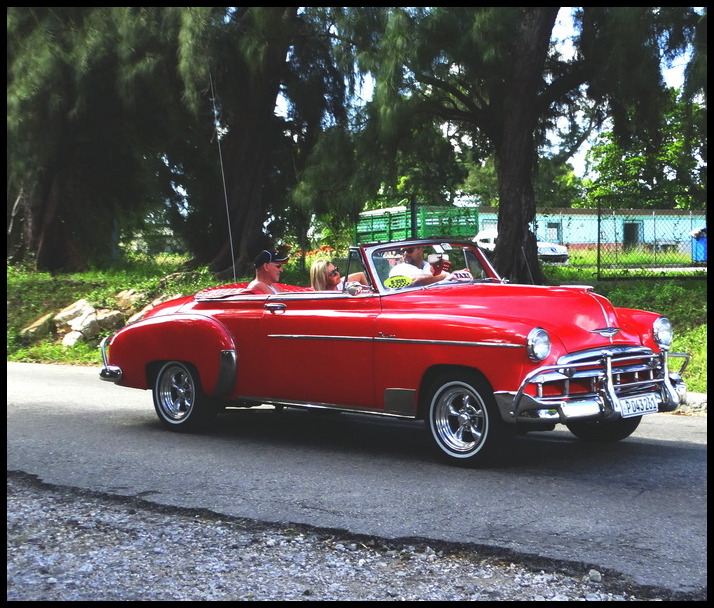
Cuba’s wonderful vintage car taxis
Transportation Tips
12. Minimize overland trips
The biggest expense in Cuba for budget travelers is overland transportation.
Cuba’s main tourist bus service and private share taxis cost about the same. Figure on $20-25 CUC per person for a 3-4 hour trip. Longer trips are considerably more expensive.
Depending on your budget and what you’re used to paying for transportation, this may seem like a lot or a reasonable price. Regardless, if you take a lot of trips in Cuba, the costs will quickly add up. I spent $127 US in one month on overland transportation, just visiting three destinations outside Havana. For me, that’s a lot!
One way to greatly reduce your costs is to take fewer trips. Just pick a few major places and spend more time in them, rather than trying to visit every great spot in Cuba.
13. Organize overland share taxis with your guest house hosts
Guest house owners usually have several local contacts for private & share taxis, tour guides, bike rentals and other services that their guests might want to use.
Although you might tend to suspect that your guest house hosts will recommend more expensive services in order to help out their friends and/or gain a commission, in reality the hosts in Cuba usually can offer their guests lower rates than what they could secure by haggling out on the streets. So take advantage of your hosts’ contacts!
14. Use Cuba’s local overland buses to really save money (but not time or hassles)
Viazul buses and share taxis are the most common overland transportation used by travelers in Cuba. But they’re expensive.
If you really want to save a lot of money, you’re certainly allowed to use Cuba’s other buses, the ones used by Cubans. You could end up paying $3-5 instead of $20-25 for a 3-4-hour overland trip, which is a huge savings. BUT, it will take you much longer, entail a lot of hassles, probably jam-packed buses and perhaps a bit of security risks for your luggage.
I met a few travelers who used the local buses and they ended up spending double to triple the time that a Viazul bus or taxi uses. So when it comes to overland travel in Cuba, it’s either your time or your money.
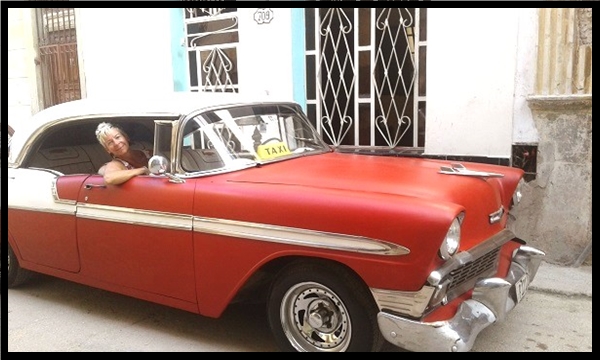
heading to the airport in Havana in a spiffy 1950s car!
15. In Havana, use local buses and share taxis
Havana is a massive city. While most of the points of interest are in Havana Vieja, there are also other attractions further away, including beaches, historic hotels, the former home of Hemmingway, and others.
To visit those other attractions, it’s really easy to get around by local buses and share taxis. Just ask your guest house owners where to catch them to your required destination.
Share taxis run regular routes all over the city. They cost 10 pesos MN / .40 cents US for each trip, no matter how far. Buses cost even less – $0.20-0.40 pesos MN / 1-2 cents US! Now that’s cheap!
Most other cities in Cuba also have very inexpensive share taxis and local buses you can use.
Ask your hosts about local buses, share taxis & other transportation options.
16. To/from the airport, take local buses (but much longer& more hassle)
It is, in fact, possible to take local buses to/from Havana airport and downtown Havana. But it entails a lot of walking and catching at least two different buses, neither of which run very frequently. It will cost less than $1 to do so, but a huge chunk of time and hassle.
17. To/from the airports, find another traveler(s) to share a taxi
If you don’t want to deal with all that, your only option is to take a taxi. From the airport into Havana a taxi costs $20-30 CUC, depending on your destination and bargaining skills.
The good news is that’s the price of the taxi, regardless of how many people ride. You can cut your cost in half, third or fourth by rounding up other travelers you see arriving at the airport to share a taxi.
When I arrived in Cuba, I found one other traveler at the airport to share a taxi with. We got to ride in a vintage car for $20 CUC, which means that I only paid $10 CUC to ride overland in my first vintage car! It was a fantastic way to start my visit in Cuba!
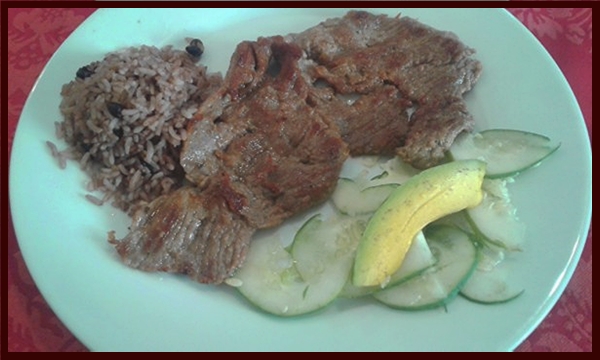
typical Cuban meal – beans & rice, pork and salad
Food & Drink Tips
18. Eat at local cafeterias / restaurants with MN
As I mentioned above, Cuba is full of local restaurants and ‘cafeterias’ with prices marked in MN ‘moneda nacional’. They are super cheap to eat at and visitors are welcome.
You can eat complete meals for 25-75 MN / $1-3 US as opposed to $4 CUC or more at regular restaurants. During my travels, I always found that the food at these local places was much better than at well-known tourist restaurants.

preparing pizza at a small pizza shop in Trinidad
19. Eat pizzas & sandwiches from local shops & street vendors
As I also mentioned briefly above, there are plenty of pizza and sandwich vendors in all of Cuba’s cities, also listing prices in MN. A ‘personal size’ pizza costs 10-15 MN / $0.40-0.60 US and sandwiches of ham, cheese, sausage cost about the same.
The ingredients are all fresh, including the sandwich buns, handmade pizza dough, meats and vegetables, so I found these Cuban pizzas and sandwiches to be quite tasty and very good value.
20. Buy fruits, vegetables, breads & pastries from local shops with MN
At local produce markets you can buy all sorts of fresh fruits & vegetables, mostly seasonal. Some are expensive, but others are very cheap. These markets also set prices in MN.
In October, when I visited, avocados were in season and a very large avocado cost 10 MN / $0.40 US. Bananas cost 1 MN each / 5 cents US. I bought small red and green bell peppers for 2-5 MN each, a bunch of spinach for 10 MN, and small eggplants for 5-10 MN each. It’s a great way to eat healthily in Cuba at very low prices.
21. Ask your guest house hosts to recommend local, cheap restaurants & food stalls
Again, ask your hosts about locations of local markets & restaurants as well as normal prices for various produce at the time of your visit.
22. Drink Cuba’s potable tap water
One exception is the town of Vinales, where the tap water is NOT potable! Even locals don’t drink it. Instead, the government ships in potable water in large red tanks for residents to collect and use at home.
Visitors can fill up their water bottles at those red tanks, too. That’s what I did in Vinales.
23. Don’t buy bottled water
Since Cuba’s tap water is potable. So you really do not need to buy bottled drinking water, unless it just makes you feel safer or something.
24. Take iodine drops for water purification in remote places & Vinales
If you’re uneasy about drinking tap water, you could take along a small bottle of iodine drops specifically designed for purifying water and adding that to your bottles of filtered tap water. And iodine is also useful for Vinales.
Please make sure to buy iodine specifically for purifying water and follow the directions carefully for use! Iodine in stronge doses can be very bad for your health.
25. Drink fresh-squeezed juices – orange, guava, mango, tamarind
While Cuban food tends to be quite bland and are seriously lacking in variety, one really great food choice in Cuba is fresh-squeezed juices. Local stalls & restaurants charge 3-4 pesos MN / 12-15 cents US for a glass of fresh juice. Fancier restaurants usually charge $1 CUC / $1.10 US. Either way, it’s very good value for money, really tasty and healthy, too.
26. Buy a bottle of Havana Club Rum and make your own cocktails
If you’re a rum fan, you can save a lot of money by simply buying your own bottle of Havan Club rum at a state store plus fruit & sugar at local markets, then mixing up your own cocktails. A 1 liter bottle of Havana Club costs about $5 CUC / $5.50 US.
Drinking out at bars and restaurants will cost you $1-4 CUC per cocktail. If you plan on lots of drinking, that will add up fast.
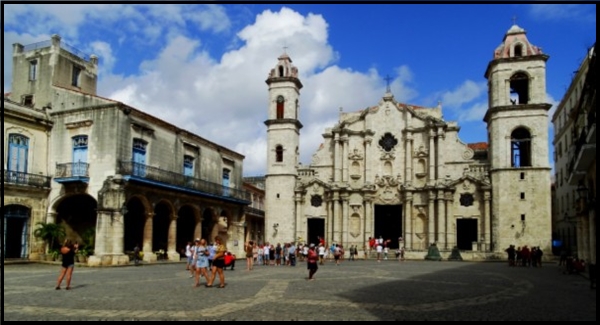
Plaza Catedral – Havana
Museums & Attractions & Activities Tips
27. Visit the many interesting little free museums
I visited a total of 15 museums. I only had to pay for three of them: Bellas Artes (actually two museums) and the Palacio de los Capitanes Generales. I also took a tour of the amazing Gran Teatro. All the other museums, historic houses and forts I visited were free.
28. Enjoy free activities – wandering the streets, visiting parks, people-watching
There are plenty of free things to do in Havana and other cities of Cuba. For starters, the historic architecture is so interesting that you can just wander around for hours admiring the buildings and little neighborhoods.
There are leafy parks, open historic plazas, interesting neighborhoods and the seaside walkway ‘malecon’. You can also watch people, visit stray cats & dogs, listen to outdoor music and watch street performers.
I’ll be writing 10 Free Things to do in Havana, with more details next week. So stay tuned!
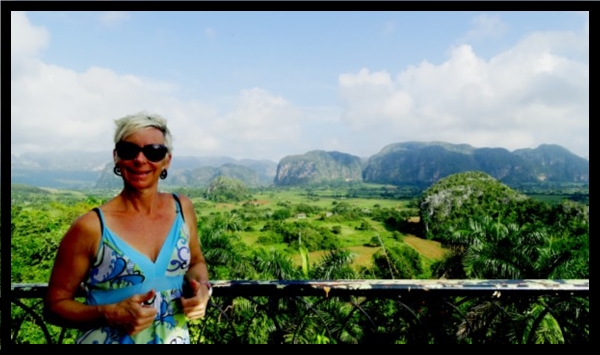
gorgeous Vinales
Summary
Many travelers visiting Cuba are surprised to find the island nation quite expensive. However, it’s also easy to travel around Cuba on a very low budget if you know how to find the country’s many inexpensive accommodations, restaurants, markets, attractions and free activities.
These money-saving tips should help any budget traveler visit Cuba without busting their budgets.
You might also find the following articles useful:
Cost of Budget Travel in Cuba in 2018
Guide to Preparing to Visit Cuba for Americans
==============================


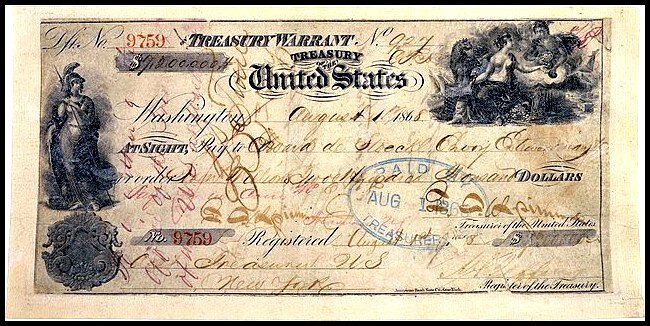

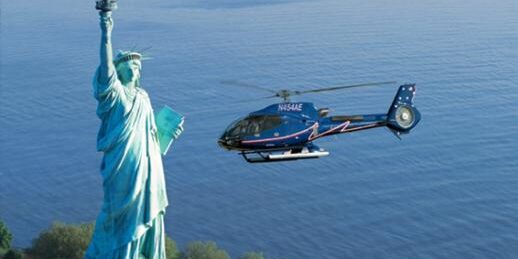



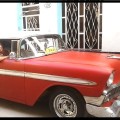



 Hi! I'm Lash, an American nomadic world traveler who's been traveling solo since 1998. I’m passionate about traveling the world nomadically and then sharing it all with you. I hope to inspire you to travel the world, to entertain you with tales from the road, and to help you reach your travel dreams. Welcome!
Hi! I'm Lash, an American nomadic world traveler who's been traveling solo since 1998. I’m passionate about traveling the world nomadically and then sharing it all with you. I hope to inspire you to travel the world, to entertain you with tales from the road, and to help you reach your travel dreams. Welcome! 



